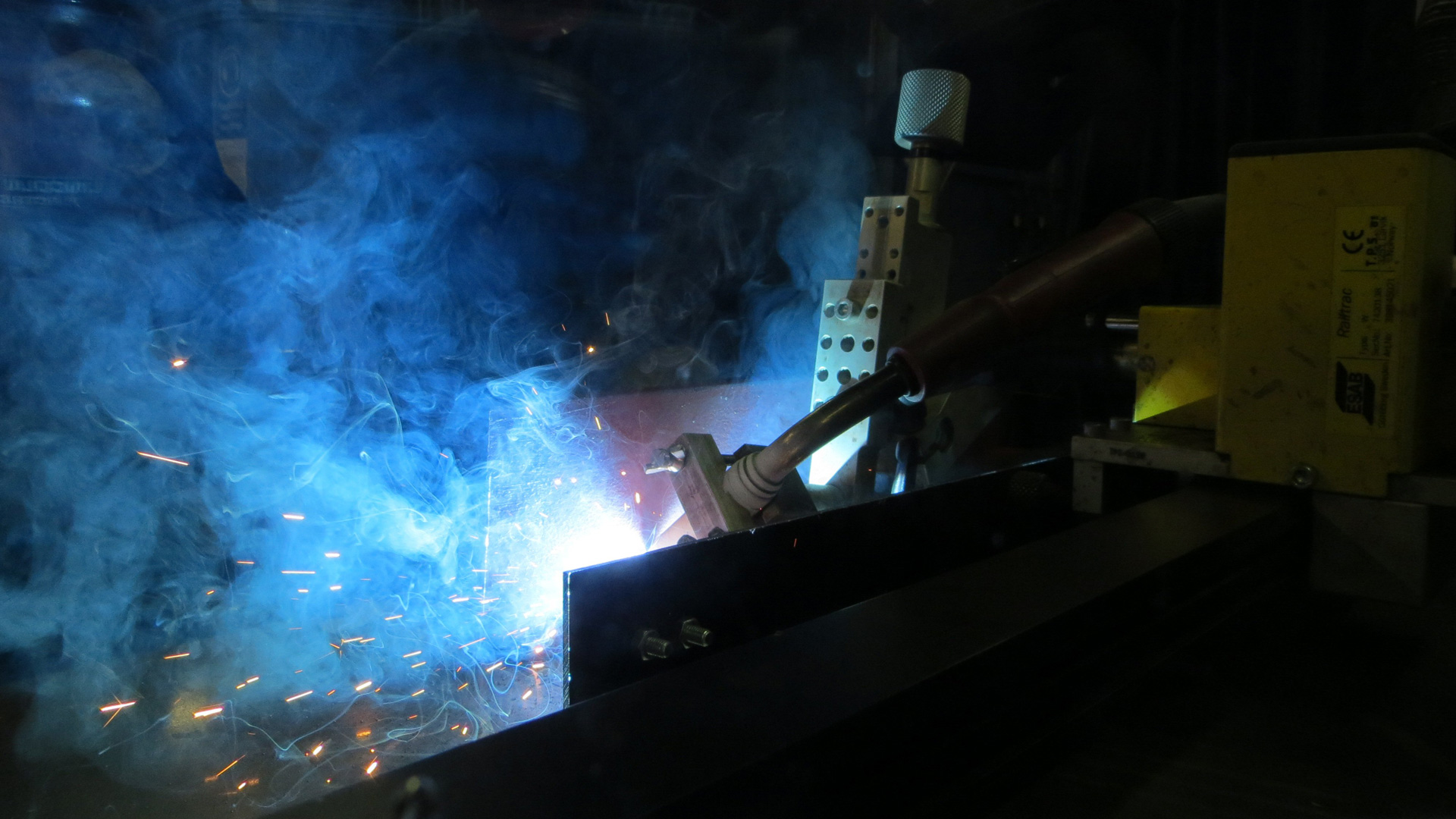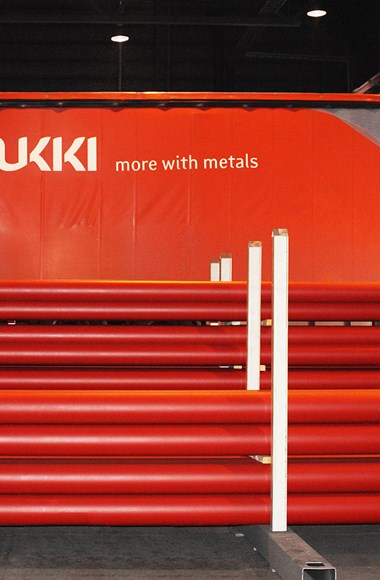Water-borne KORRO AQUA is ideal for use in welding
The welding tests of water-borne KORRO AQUA 2741 Prefabrication Primer were carried out in a welding laboratory at Helsinki Metropolia University of Applied Sciences and the quality of a weld was studied in cooperation with Rautaruukki Raahe's laboratory.
A welding project studied the use of water-borne KORRO AQUA 2741 Prefabrication Primer in welding and the manageability of a welded seam. The results were compared with traditional solvent-based KORRO E epoxy- and KORRO SS zinc silicate prefabrication primers. Besides the welding-related properties of the paint, the project studied the quality and appearance of a weld, the formation of combustion gases and overcoatability. In the course of the project it was also checked whether the welded area can easily be cleaned with a wire brush.
According to the test results, KORRO AQUA 2741 Prefabrication Primer is well-suited for welding. The amount of welding spatter and the porosity of the weld are low. A welded seam can easily be cleaned with a wire brush. The formation of combustion gases is at a typical level for organic paints and it can be managed by local exhaust and good ventilation.
KORRO AQUA 2741 Prefabrication Primer
Water-borne
Very low solvent emissions
- no need for combustion plant (VOC legislation
- occupational safety and occupational hygiene
- fire safety
One-component
Very easy to use
- simple equipment
- lower paint loss
Very fast drying
Highly suitable also for automatic lines
- dust-free 1–3 min
- touch dry 5 min
Short delivery cycle in surface treatment proces
Excellent weldability
Can be welded through without removing the paint
Causes no gas pores
Causes no extra welding spatter
Easy to clean with a wire brush
Excellent overcoating properties
Can be overcoated with most common paint types
No maximum overcoating interval
Formation of combustion gases
Formation of combustion gases is at a typical level for organic paints
- can be managed by local exhaust and good ventilation

